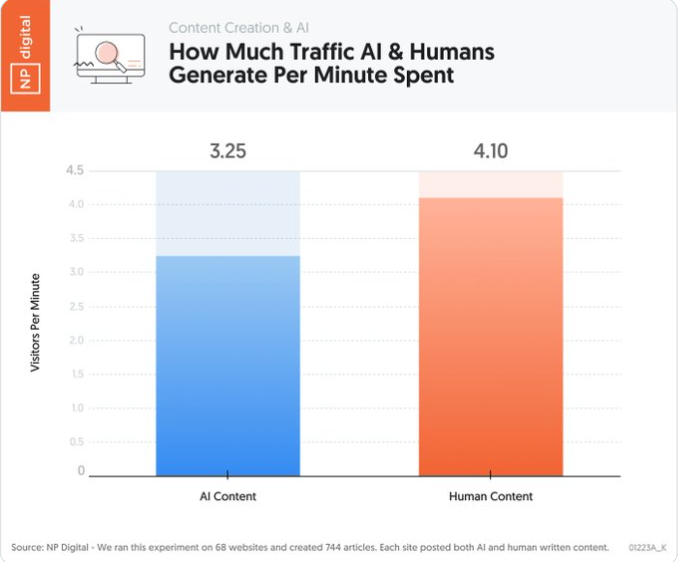Creating engaging content that captures your audience's attention is increasingly important. With the advancement of technology, particularly generative AI, converting traditional static content into interactive experiences is both achievable and effective. Interactive content not only boosts user engagement but also fosters deeper emotional connections, resulting in higher conversion rates. This tutorial will guide you through leveraging generative AI to enhance your content creation process.
Transforming Static Content into Interactive Experiences
To begin elevating your content, it’s essential to understand the limitations of static formats. Static images and text often capture attention only momentarily; they do not engage the audience or encourage participation. In contrast, interactive experiences prompt users to engage, creating memorable moments that lead to lasting impressions.
Generative AI tools can significantly enhance this transformation. They allow you to create content that responds to user inputs, such as quizzes, polls, and interactive videos. A notable example is Sephora's Virtual Artist, which enables customers to virtually try on makeup products. This personalized shopping experience surpasses traditional images, promoting engagement.
Research indicates that AI-enhanced visual content generation can streamline production processes while maintaining brand consistency. Utilizing advanced generative AI models can help produce tailored content across various formats, including dynamic imagery that resonates with your audience.
This infographic illustrates the difference between static and interactive content, demonstrating how engagement can be enhanced through interaction (Source: Website Files).
Leveraging No-Code AI Tools for Engaging Content Creation
You don’t need programming expertise to create engaging interactive content. No-code platforms empower you, as a content creator, to build engaging experiences without requiring technical skills. Platforms like Wix ADI and Canva offer user-friendly interfaces that allow for the creation, editing, and sharing of interactive content with ease.
Stitch Fix provides an excellent case study here. They utilize tools like GPT-3 to develop ad headlines and product descriptions tailored to their audience. Fine-tuning these AI models to understand their brand voice has proven effective, resulting in content that resonates well with users and often outperforms traditional writing.
When selecting no-code AI tools, focus on your specific needs. Look for programs that offer versatility, easy integration, and scalability. These AI platforms often include pre-built templates that enable you to get started quickly, shortening your content creation cycle and increasing overall productivity.
 This screenshot showcases the Wix ADI interface, highlighting how users can create content without coding skills, illustrating the ease of using no-code platforms (Source: Elegant Themes).
This screenshot showcases the Wix ADI interface, highlighting how users can create content without coding skills, illustrating the ease of using no-code platforms (Source: Elegant Themes).
Measuring Performance: Key Metrics for Interactive Content Effectiveness
Once you’ve created your interactive content, measuring its effectiveness is crucial to understanding how well it resonates with your audience. Start by identifying essential performance metrics, such as engagement rates and conversion rates. These metrics provide insight into how users interact with your content and what actions they take afterward.
For instance, AI-generated content has led to a reported 20% increase in conversion rates in several studies, highlighting the effectiveness of incorporating generative AI into your strategy. Engage in A/B testing to compare the performance of AI-generated content against traditional formats, as this can reveal which approach yields better results.
Additionally, sentiment analysis is an important factor to consider. It gives you insights into how users feel about your content, helping to fine-tune your messaging. Research from various analytics tools reveals that around 73% of businesses integrating AI-assisted content have observed improvements in audience engagement.
 This chart compares the engagement metrics of AI-generated content against traditional content, illustrating the effectiveness of AI-driven strategies (Source: Neil Patel).
This chart compares the engagement metrics of AI-generated content against traditional content, illustrating the effectiveness of AI-driven strategies (Source: Neil Patel).
Integrating AI with Existing Platforms for Enhanced Interactivity
Incorporating generative AI into your content management systems (CMS) can significantly improve user experiences. Start with API integration, which enables seamless interaction between your CMS and AI tools. This allows for more efficient content creation workflows and automated updates.
Fine-tuning AI tools to maintain your brand voice is also crucial. Collect high-quality data that reflects your brand’s style to ensure that the generated content aligns with your messaging.
Moreover, establish a robust quality assurance workflow. Implement human review checkpoints to verify the relevance and accuracy of AI-generated content before publication. Companies like Adobe exemplify successful AI integration within their Experience Manager, showcasing the power of such technologies to streamline workflows.
 This flow diagram outlines the integration process of generative AI into existing systems, offering a step-by-step overview for content creators (Source: Google Cloud).
This flow diagram outlines the integration process of generative AI into existing systems, offering a step-by-step overview for content creators (Source: Google Cloud).
Emerging Technologies Shaping the Future of Content Engagement
Looking ahead, several trends are poised to reshape content engagement through generative AI. One of the most significant is AI-enhanced hyper-personalization. By 2025, AI systems will be capable of analyzing data from multiple sources to create tailored marketing messages in real-time.
The growth of augmented reality (AR) combined with AI also offers users immersive ways to engage with brands. For instance, businesses will increasingly develop AR content, allowing users to interact with products before purchasing.
Additionally, advanced AI models will make sentiment analysis more precise, helping marketers better understand customer emotions and reactions across various platforms.
 This infographic provides a timeline of emerging technologies, highlighting key advancements expected to shape the future of content engagement over the next five years (Source: Venngage).
This infographic provides a timeline of emerging technologies, highlighting key advancements expected to shape the future of content engagement over the next five years (Source: Venngage).
Ethical Considerations in AI Content Creation
As you delve into the possibilities of generative AI, it's important not to overlook ethical implications. Begin by addressing data privacy and ensuring proper security measures are in place when collecting user data. Compliance with regulations such as GDPR and FERPA is vital.
Another significant concern is bias in AI-generated content. Regularly auditing your AI outputs can help identify and mitigate potential biases. Transparency about how your AI operates can build trust with users.
Additionally, obtaining informed consent before using AI tools—especially in sensitive areas like education—is essential. Consider developing clear guidelines that articulate acceptable AI use to help maintain academic integrity and protect user data.
![]() This icon symbolizes the ethical implications of artificial intelligence in content creation, serving as a visual representation of responsible AI use (Source: Shutterstock).
This icon symbolizes the ethical implications of artificial intelligence in content creation, serving as a visual representation of responsible AI use (Source: Shutterstock).
Conclusion
The landscape of content creation is evolving, fueled by advancements in generative AI. By leveraging these technologies, you can create interactive experiences that engage your audience and encourage participation, ultimately driving conversions.
From utilizing no-code platforms to measuring performance and integrating AI into existing systems, many strategies can enhance your content creation efforts. As you adopt these innovations, keep in mind the ethical considerations that accompany them, ensuring that your use of AI promotes responsible practices.
Embrace the capabilities of generative AI and take your content creation journey to new heights. By doing so, you not only enhance your content but also contribute to a more interactive and engaging future for your audience.

Comentários (0)
Entrar para participar da discussão ou .